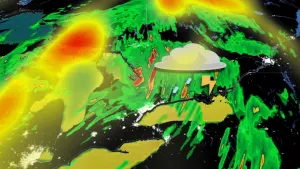
Authorities issue warning after death cap mushroom found in Vancouver
Vancouver Coastal Health is warning people to be careful after a death cap mushroom was spotted on a private property in the heart of the city.
Dr. Emily Newhouse, a medical health officer with the health authority, says warnings are issued annually, but the mushroom was spotted earlier in the season than usual.
"Typically, we see death cap mushrooms appearing August through November. We can see them earlier when there's lots of watering and we think that's what happened in this instance," Newhouse said.

Image: Amanita phalloides or death cap mushrooms were first spotted in B.C. in 1997 when they were found growing in Mission, B.C., near old chestnut trees. (Paul Kroeger)
She says the death cap mushroom, which can look like other edible mushrooms like the Asian straw mushroom, is "very, very dangerous."
"They're actually responsible for the majority of serious mushroom poisonings in North America," she said.
In 2016, a three-year-old boy died after eating a death cap mushroom picked in Victoria.
WHAT TO DO IF YOU SPOT ONE
The death cap mushroom is an invasive species to B.C., and is often found in urban environments attached to the roots of imported European trees like beech trees, chestnut trees, and English oaks.
SEE ALSO: Woman dies of flesh-eating disease after visiting Florida beach
Newhouse advises if you see a death cap mushroom, dispose of them either in your green bin or into the regular garbage. Do not put them in your home compost, she says, because you can unwittingly spread spores or pieces of the mushroom around your own garden.
You can also report the sighting at the B.C. government's invasive species website.
If you think you may have ingested a death cap mushroom, Newhouse says you should seek medical attention even if initial symptoms like abdominal pain, nausea and vomiting have subsided.
"[You] may feel better initially after those initial symptoms and then a second wave of diarrhea, cramping can occur ... then we see some of the more serious complications like liver failure and kidney failure," she said.
This article, written by Roshini Nair, was originally published by CBC News.
Weather Network Editor's Note: The video that leads this article is from March 2019.









